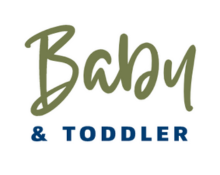
Nipple vasospasm, also known as Raynaud’s phenomenon of the nipple, is a condition in which the blood vessels in the nipples constrict or spasm, causing pain, discoloration, and discomfort. It can occur during or after breastfeeding and may be triggered by exposure to cold temperatures or stress. Here are some important points about nipple vasospasm:
Symptoms: Nipple vasospasm typically presents with the following symptoms:
- Intense pain, burning, or throbbing sensation in one or both nipples.
- Nipple discoloration, appearing pale, white, or blue.
- Sensitivity to cold temperatures or changes in temperature.
- Relief or improvement of symptoms with warmth or heat application.
Causes: The exact cause of nipple vasospasm is not fully understood, but it is believed to be related to a combination of factors, including poor blood circulation, nerve sensitivity, and hormonal changes. Cold temperatures, stress, and poor latch or positioning during breastfeeding may trigger or exacerbate the symptoms.
Management and treatment:
- Keep warm: It is essential to keep your nipples warm and avoid exposure to cold temperatures. Dressing in layers, using warm compresses before and after breastfeeding, and ensuring a warm environment can help minimize vasospasm episodes.
- Warm compresses: Applying warm compresses or using warm water to soak the nipples can help relax the blood vessels and alleviate the pain.
- Improve latch and positioning: Ensuring a proper latch and optimal positioning during breastfeeding can help reduce friction and pressure on the nipples, potentially decreasing the occurrence of vasospasm.
- Stress management: Finding ways to manage stress, such as relaxation techniques, deep breathing exercises, or engaging in activities that promote relaxation, may help minimize vasospasm episodes.
- Consult with a healthcare professional: If the symptoms persist or become severe, it is recommended to seek guidance from a healthcare professional or a lactation consultant. They can provide further evaluation, support, and guidance on managing nipple vasospasm.
In some cases, a healthcare professional may prescribe medication, such as calcium channel blockers or topical ointments, to help improve blood flow and alleviate vasospasm symptoms. However, these interventions are typically considered after non-pharmacological measures have been tried and if the symptoms are significantly impacting breastfeeding.
It’s important to remember that every individual’s experience with nipple vasospasm may vary, and treatment approaches may differ. Working closely with a healthcare professional can help determine the most appropriate strategies for managing nipple vasospasm while continuing to breastfeed.
